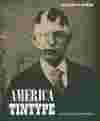KSIĘGARNIA ARTYSTYCZNA BOOKOFF | UL.OGRODOWA 7 | 00-893 WARSZAWA | TEL. (22)[zasłonięte]253 62 | KOM. 503 [zasłonięte] 126
|
America and the Tintype
| Dane książki |
| ISBN |
978-[zasłonięte][zasłonięte]52168 |
| Oprawa |
Oprawa twarda |
| Ilość stron |
272 |
| Wydawnictwo |
Steidl |
| Język |
Angielski |
Cena: 129.00 PLN (wystawiamy faktury vat)
W celu obejrzenia naszej pełnej oferty książkowej zapraszamy do naszych księgarni w Warszawie:
Księgarnia Bookoff przy ul. Ogrodowej 7 specjalizuje się w książkach i albumach fotograficznych.
Tel. (22)[zasłonięte]253 62 lub 503 [zasłonięte] 126
Księgarnia czynna jest w godzinach:
Pon-Pt, godz. 11-19
Sob, godz. 12-16
Księgarnia Muzeum Bookoff przy ul. Pańskiej 3 w Muzeum Sztuki Nowoczesnej. Specjalizuje się w dziedzinach którym poświęcona jest działalność Muzeum, czyli sztuce, projektowaniu graficznemu, architekturze oraz urbanistyce.
Tel. 512 [zasłonięte] 208
Książka dostępna w Księgarni Bookoff przy ul. Ogrodowej 7.
|
One of the most intriguing and little studied forms of 19th-century photography is the tintype. Introduced in 1856 as a low-cost alternative to the daguerreotype and the albumen print, the tintype was widely marketed from the 1860s through the first decades of the 20th century as the most popular photographic medium. It was the picture-making preference of the people, and was almost never used for celebrity portraiture. The tintype was affordable, portable, unique, and available almost everywhere. Because of its ubiquity, the tintype provides a startlingly candid record of the political upheavals that rocked the four decades following the American Civil War, and the personal anxieties they induced. As such, the tintype was far more than a medium for straight portraiture. As Steven Kasher argues, the tintype studio became a kind of performance space where sitters could act out their personal identities. Sitters brought to the tintype studio not just their family and friends but also the tools of their trade, masks and costumes, toys and dolls, stuffed animals, and props of all sorts. Often they would enact stereotypes and fantasies that reflected or challenged conventional gender, race, and class roles. Surprisingly, the tintype was almost exclusively an American phenomenon, rarely used in other countries, and this book demonstrates how this inauspicious form of photography provides extraordinary insight into the development of national attitudes and characteristics in the formative years of the early modern era.
|
|

